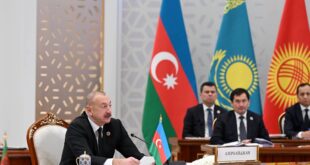Eagle is a bird of prey worshipped in several cultures. It’s present in Greek mythology and among Egyptians hieroglyphics, called Garuda as Vishnu’s horse by Indians and linked to God of thunder by Iroquois; eagle is maybe one of the animals richest of symbolism, in Tajikistan as well.
Surrounded by the two high mountain ranges Trans-Alay and Pamir, Tajikistan territory is mainly mountainous, a right habitat for eagle where they are at ease in. Tajiks have ancient Persian ancestry, so that today their language is well different from the ones of Turkish speaking countries of Central Asia. In Persian culture eagle was, among other things, symbol of glory descending from on high to grant power to the rulers.
In Tajikistan, where they can be seen cutting through the deeply blue sky, eagles are believed be the queens of animals representing values as honesty, strength, bravery and rightness. Tajiks have a lot of eagle related tales, the most renowned narrates of one of these predators to dye in the effort to save a man from an evil spirit. On the verge of death, eagle would have asked the man to make a flute from a bone of her, so to fill the world with joy after her death. This was done, and the musical instrument became part of Tajik customs.
The music of this flute marks the starting of the eagle dance, a very relevant dance in traditions of Tajikistan. This dance is protagonist in occasion of most popular festivals, as dug of channels and sowing, as well in ancestors-linked-ceremonies. When the flute is playing people start to dance gradually imitating eagle movements. The dance is faster and faster and dancers look as they actually became eagles standing out in the sky. There’re dances only for men and mixed ones, all nevertheless are played and danced at a seven eight rhythm.
The dance provides that a first dancer starts hovering, calling after a while someone also to join him. They initially move slowly with open arms, as two eagles soaring, then music turns faster and so the dancers’ movements: they shake their arms, they jump and they do quick and sudden gestures, moving away and approaching. The same happens when dancing are women, whereas in a more delicate and less frenzied way. The eagle dance hasn’t fixed steps, so all people, old and young, can freely join dancers everyone feeling themselves eagle as they wish.
In event of wedding or others meeting musicians are usually two flute players that changeover, while two women rhythm the dance beating the tambourine. In these occasions Tajiks look as they want to fulfil the wish of the legend eagle, namely the fact the world would be full of joy.
Credits: pamirtimes.wordpress.com
 East Journal Quotidiano di politica internazionale
East Journal Quotidiano di politica internazionale




